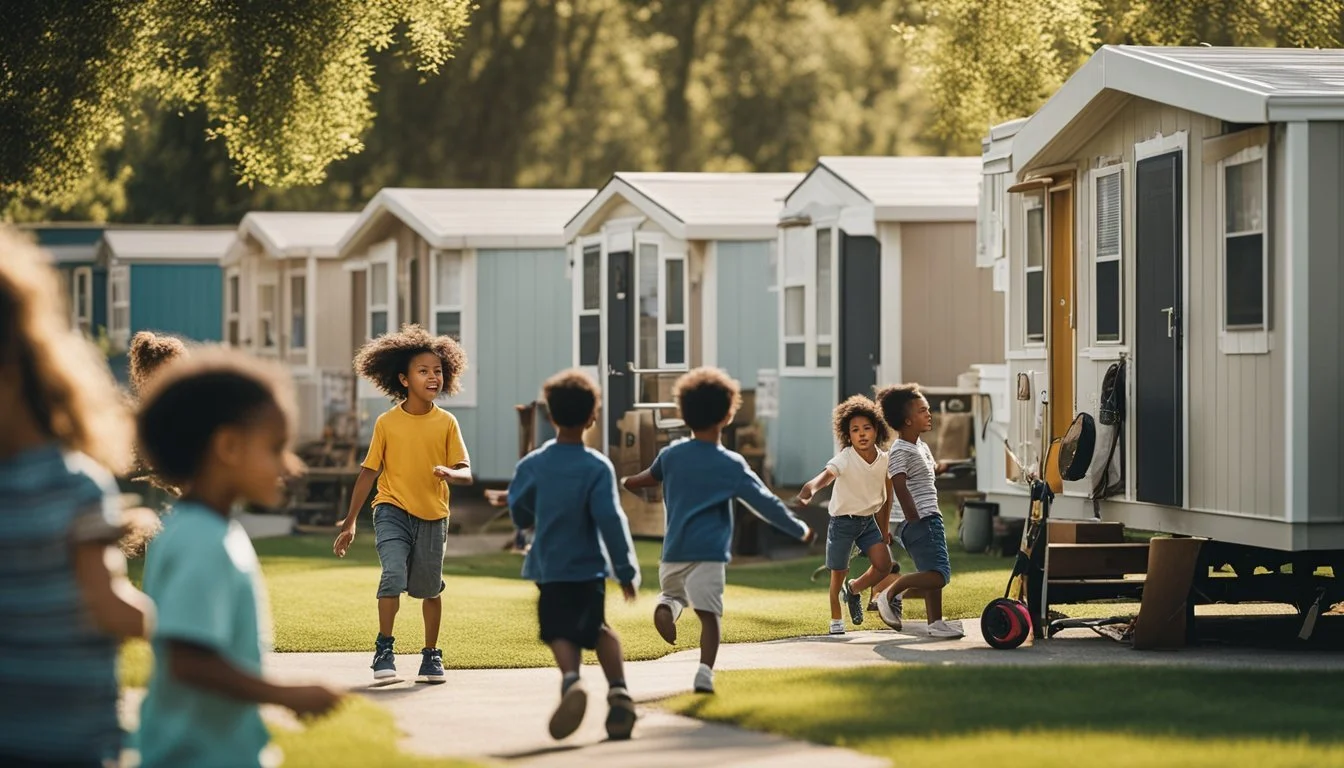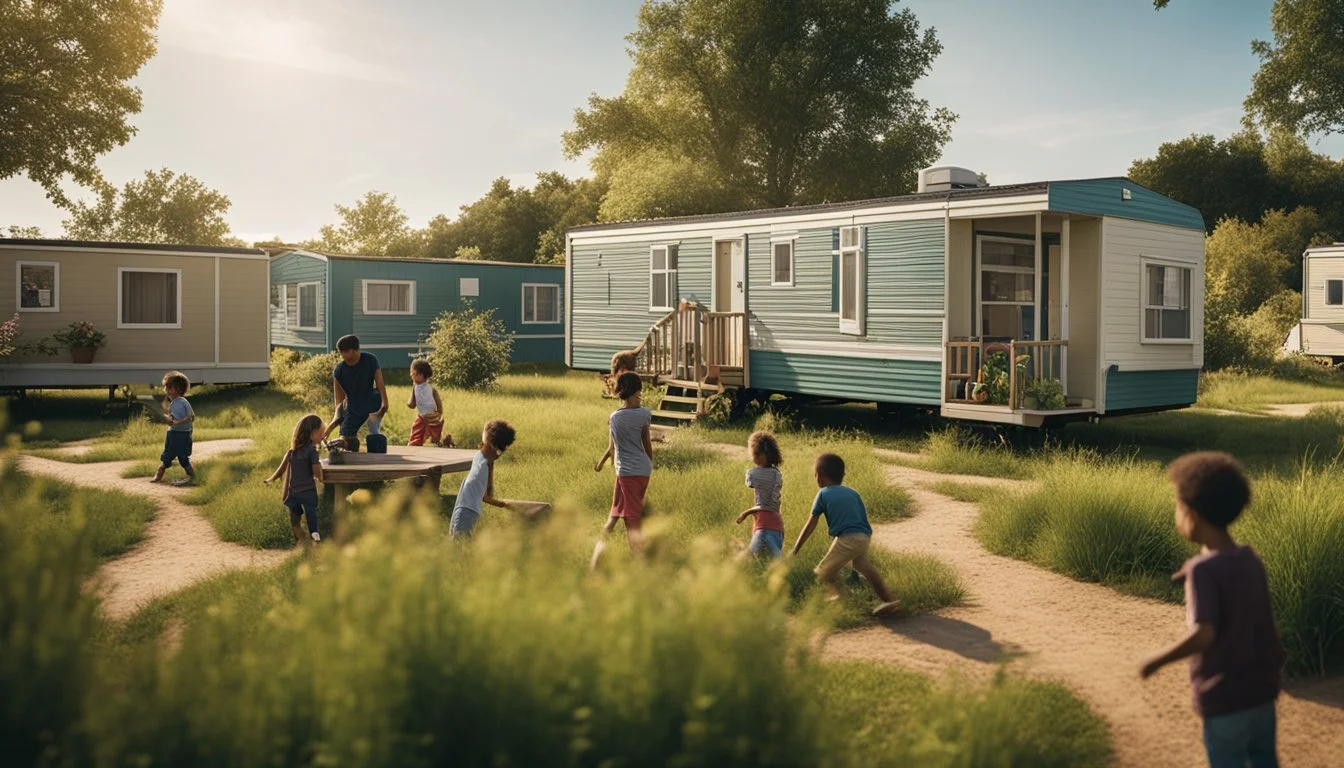The Representation of Poverty in Children's Literature Featuring Mobile Homes
Analyzing Storytelling and Themes
Children's literature has long been a mirror reflecting the diverse experiences of young readers, yet certain aspects of life remain underrepresented. Stories featuring mobile homes often illuminate the unique challenges faced by families living under financial strain. By exploring these narratives, readers can gain insight into the everyday realities of poverty and how it intersects with childhood experiences.
Mobile homes, depicted in these books, serve not just as setting but as symbols of resilience and adaptability. They often highlight the sense of community and creativity that emerges when traditional stability is out of reach. These stories contribute to a broader understanding of socioeconomic diversity, engaging both young readers and adults in important conversations about social class.
The inclusion of mobile homes in children's literature brings a nuanced portrayal of poverty that challenges stereotypes and broadens perspectives. By intertwining the struggles and triumphs experienced in these unique living conditions, such books play a crucial role in fostering empathy and awareness among readers.
Poverty and Class as Themes in Children's Literature
Children's literature often tackles complex social issues, including poverty and class, with sensitivity and insight. By exploring these themes, young readers gain a deeper understanding of societal differences and empathy for diverse lives.
Defining Child Poverty in Literature
In children's literature, poverty is depicted through various lenses, reflecting the multifaceted nature of economic hardship. Stories often present characters facing challenges such as limited resources or lack of access to education. These narratives help readers grasp the realities of child poverty, making the abstract concept more tangible.
Books focusing on child poverty aim to build awareness and empathy. Stories set in contexts like mobile homes or urban environments can illustrate the daily struggles and resilience of children in these situations. By portraying these experiences, literature becomes a tool for social understanding, highlighting both difficulties and moments of hope.
Class Representation and Its Impact on Young Readers
Class representation directly impacts how young readers perceive social hierarchies and inequalities. Literature portrays class through characters who either navigate or challenge societal boundaries. Such narratives encourage readers to question stereotypes and form nuanced views of social structures.
Children's literature often uses diverse settings and characters to illustrate class distinctions. For example, stories involving families living in mobile homes may depict the disparities between different social strata. By experiencing these realities through relatable characters, readers develop a more inclusive worldview.
Representation in literature serves a crucial role in shaping perceptions and fostering inclusivity. By reflecting the diverse range of social class experiences, children's books can empower young readers, promoting understanding and empathy across diverse socioeconomic backgrounds.
Mobile Homes in Picture Books
Children's picture books often use settings like mobile homes to reflect deeper sociocultural themes. Mobile homes can symbolize a fluctuating status and flexibility, while also representing the challenges faced by families in such living arrangements. How these homes are portrayed can influence children’s perceptions of identity and provide a medium for self-affirmation through their residences.
Symbolism of Mobile Homes in Narratives
Mobile homes in children's picture books often symbolize both stability and transience. They can reflect a family's journey through economic challenges, where a mobile home represents adaptability and resilience. The portrayal of these homes might show their functionality and warmth, providing children with a familiar and comforting image.
In narratives, they sometimes challenge stereotypes by depicting vibrant, loving communities within mobile parks. These settings can offer a unique backdrop that emphasizes the characters' adaptability and resourcefulness. Through stories where children use their environment creatively, mobile homes become symbols of possibility and hope, shaping young readers’ understanding of different lifestyles.
Identity and Self-Affirmation through Residence
Residential settings like mobile homes can affect how children see their identity, particularly in picture books where home is intricately linked with self-perception. When homes are depicted positively, they help affirm a child's identity, reinforcing pride in their living situation.
Picture books can provide a sense of belonging and validation. By showcasing diverse types of homes, including mobile ones, literature can encourage children to embrace their personal narratives. This reflection in storytelling empowers children to take pride in their experiences and fosters confidence, helping them understand that their home type does not limit their identity. Representation in these books helps children see their home as an integral and affirming part of who they are.
Inclusivity and Diversity in Representation
In children's literature, inclusivity and diversity play crucial roles in offering readers a window into various worlds and experiences. Tackling themes such as gender, ethnicity, and family structures within stories allows for a richer understanding of the diverse world children live in.
Gender and Ethnicity in Children's Stories
Gender and ethnicity are pivotal in shaping the narratives in children's literature. By featuring diverse characters, authors can break away from the traditional stereotypes often seen in older works. Books with multifaceted characters provide young readers with role models who reflect real-world diversity.
Incorporating ethnically diverse characters not only benefits children from those backgrounds but also educates all readers about different cultures. Multicultural literature promotes empathy, understanding, and acceptance among young audiences, making it an essential component in contemporary storytelling.
Inclusion of Diverse Family Structures
Representing diverse family structures in children's books is vital for fostering inclusion. Traditional depictions of families often exclude non-traditional arrangements such as single-parent families, families with same-gender parents, or those living in mobile homes. These depictions provide visibility and validation to children from these backgrounds.
Books that illustrate varied family dynamics help normalize these structures for all readers. They play a significant role in promoting equity by showing that families come in all shapes and sizes. Storylines featuring diverse arrangements can also spark conversations about acceptance and the value of different family experiences, enriching the reader's perspective.
Social Issues and Justice in Children's Narratives
Children's literature often explores themes that reflect societal realities such as homelessness, hunger, and multicultural representation. These narratives serve as powerful tools for raising awareness about social justice issues among young readers.
Homelessness and Hunger in Storytelling
Many children's books address the challenges of homelessness and hunger, portraying how these issues affect families and young individuals. By providing stories with characters experiencing these difficulties, literature offers empathy pathways for readers. Children learn about different life experiences and the resilience required to cope with such situations.
Books focusing on homelessness often highlight the emotional and psychological impact of living without stable shelter. They show how families adapt and find strength in adversities. Hunger narratives further underscore the critical nature of food security and how it influences a child's ability to learn and thrive.
Critical Multicultural Analysis of Narrative Discourse
Critical multicultural analysis examines how diverse cultural backgrounds and experiences are represented in children's stories. It questions the authenticity and accuracy of portrayals in literature aimed at young audiences. This analysis is crucial for ensuring that all children see themselves reflected in stories they read.
By scrutinizing narrative discourse, educators and readers can identify biases and stereotypes in books. This approach encourages a more inclusive literary landscape that respects cultural nuances and fosters social justice. The goal is to promote narratives that unite rather than divide, encouraging understanding across different communities.
Educational Implications of Literature on Poverty
Children's literature depicting poverty, especially narratives involving mobile homes, can significantly influence educational outcomes by fostering early literacy skills and raising awareness about social exclusion. These themes often provide opportunities for critical thinking and discussions about empathy.
Reading and Early Childhood Education
Books portraying poverty in the setting of mobile homes can enhance reading skills and promote engagement in early childhood education. Stories with relatable characters facing everyday challenges can captivate young readers, helping them to connect with the material and encouraging a love for reading.
Incorporating stories about poverty in classrooms can also support vocabulary development, allowing children to learn new words related to socio-economic themes. These narratives can facilitate comprehension and analytical skills as children discuss character motivations and story outcomes.
Promoting Social Exclusion Awareness through Literature
Literature focusing on poverty, especially with settings like mobile homes, can be a powerful tool in promoting awareness about social exclusion. These stories can lead to discussions about socio-economic diversity and challenges, helping children develop empathy and understanding for different life experiences.
By presenting characters who navigate various hardships, literature can illustrate the real-world implications of poverty and exclusion. This understanding can lay the groundwork for more inclusive attitudes in young readers, fostering an educational environment that values diversity and encourages community support.
Cultural and Social Elements in Literary Depictions
Literary representations of poverty in children's books often highlight cultural and social aspects through the depiction of food, material possessions, occupations, and opportunities for social mobility. These elements play a significant role in illustrating the socio-economic realities faced by those residing in mobile homes.
Food and Material Possessions as Cultural Signifiers
In stories featuring mobile homes, food often serves as a cultural marker. Characters may rely on affordable meals or creatively stretch food supplies to sustain themselves. These narratives describe how limited access to fresh ingredients impacts daily life.
Material possessions are depicted through items like thrifted furniture or worn hand-me-downs, emphasizing economic constraints. These belongings highlight the scarcity and creativity within these communities, underlining financial difficulties without overtly dramatizing them.
Lists of shared resources, such as community gardens or communal kitchens, further illustrate reliance on collective support systems. Bold contrasts between what is available and what is desired reveal the material reality the characters navigate daily.
Occupation and Social Mobility in Literary Works
Occupations are often limited by geography and education. Characters may work jobs that offer little security, like seasonal or part-time positions. Stories might explore the motivations and aspirations behind their work choices, reflecting the struggle for stability.
Social mobility, or the lack of it, is highlighted through limited opportunities for advancement due to structural barriers. Educational access is often portrayed as a pivotal factor influencing future prospects. Italicized narratives depict characters striving to improve their situations, focusing on education or skill development as essential pathways.
The books may incorporate tables showing contrasts between past generations and current aspirations, emphasizing ongoing efforts for upward mobility. Safety concerns might arise from unstable employment or inadequate infrastructure, adding complexity to the portrayal of life in mobile homes.
Language and Representation in Children's Literature
Depictions of language in children's literature often reveal social realities, especially in stories that explore poverty. These narratives utilize authentic voice and realistic dialogue to connect with young readers, providing insights into different living conditions.
The Role of Speech in Depicting Social Reality
Speech in children's literature can highlight socio-economic backgrounds through vocabulary, tone, and dialogue. Characters from impoverished backgrounds might use colloquial, regional, or non-standard forms of language, reflecting their environment and experiences.
Dialogue is crucial in portraying distinctive life contexts. Authors may use speech patterns to distinguish characters, providing a glimpse into their day-to-day realities. Literary choices in language can underscore differences in class, education, and cultural identity, making characters more relatable and authentic.
Realistic Fiction and Authentic Voice
Realistic fiction strives for credibility by focusing on believable dialogue and scenarios. Authors aiming to address poverty in children's literature employ an authentic voice that resonates with readers and mirrors everyday conversations.
Captivating narratives often hinge on characters' voices that are true to their age, background, and situation. This authenticity helps in building empathy, allowing young readers to see through the eyes of those within different socio-economic contexts. By doing so, literature becomes a tool for understanding and relating to diverse lifestyles.







